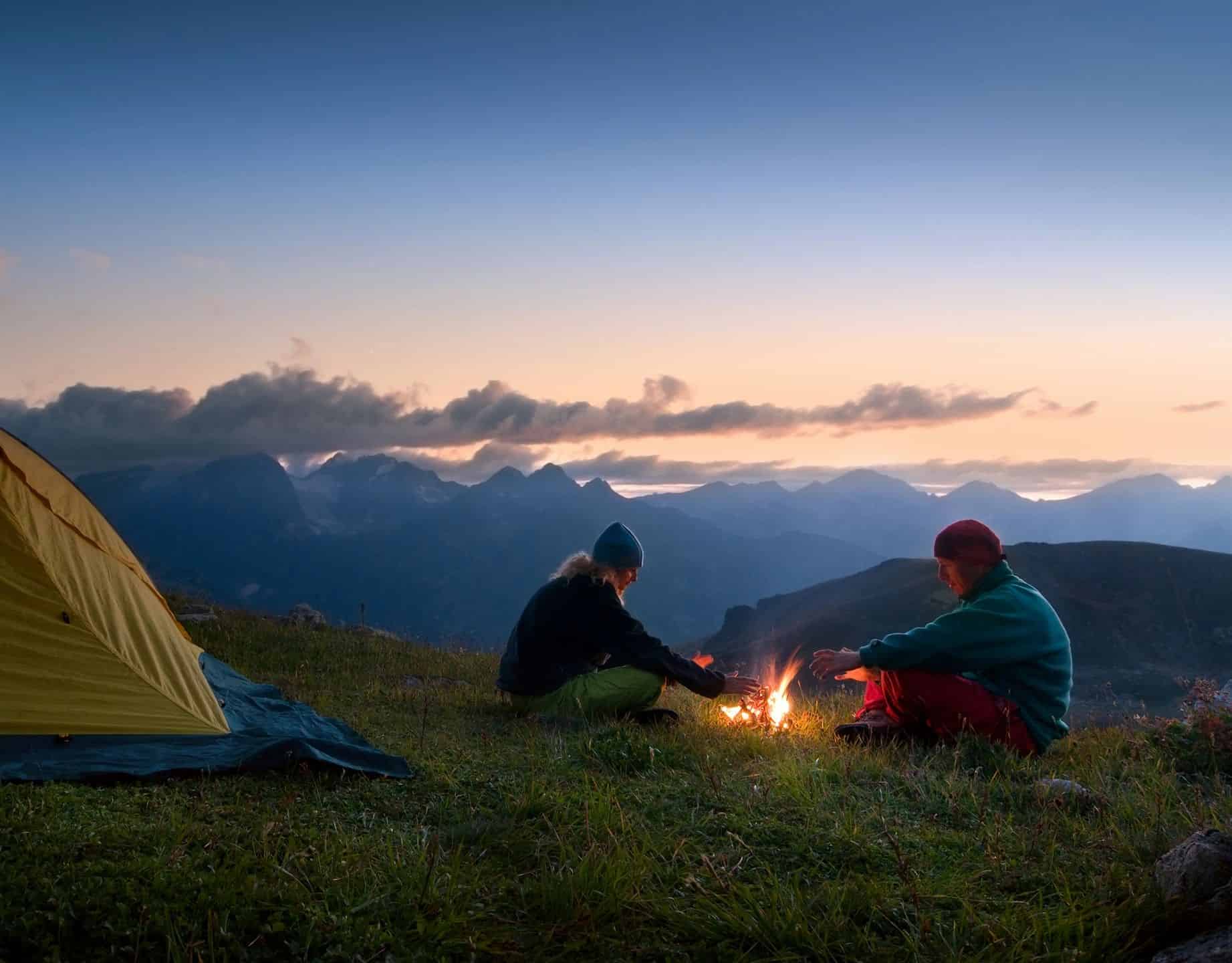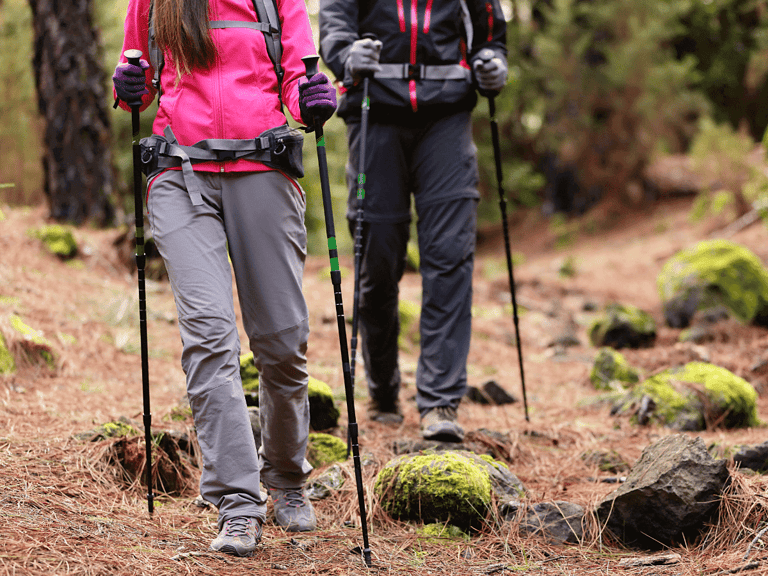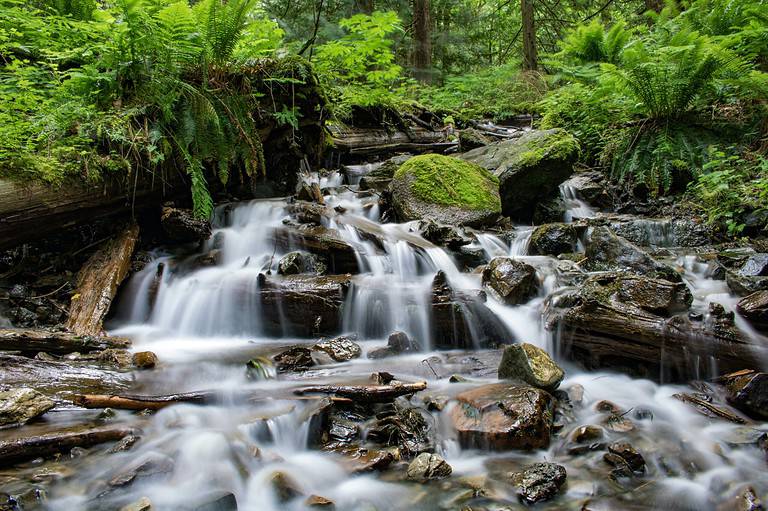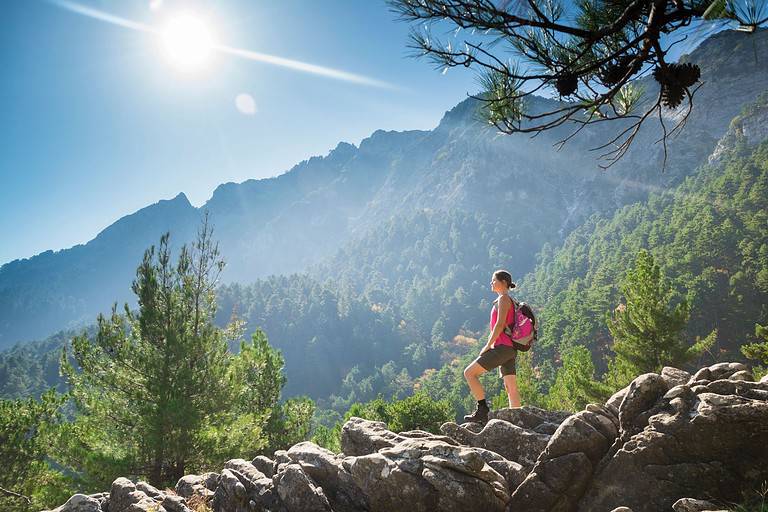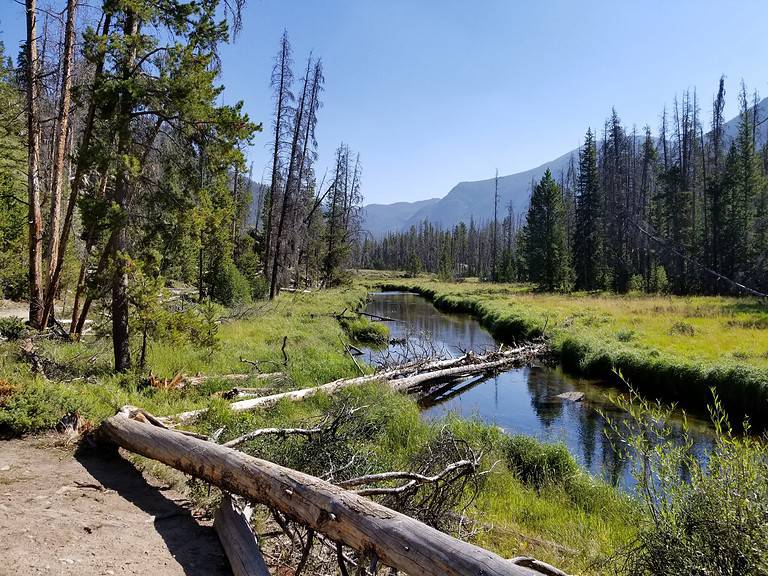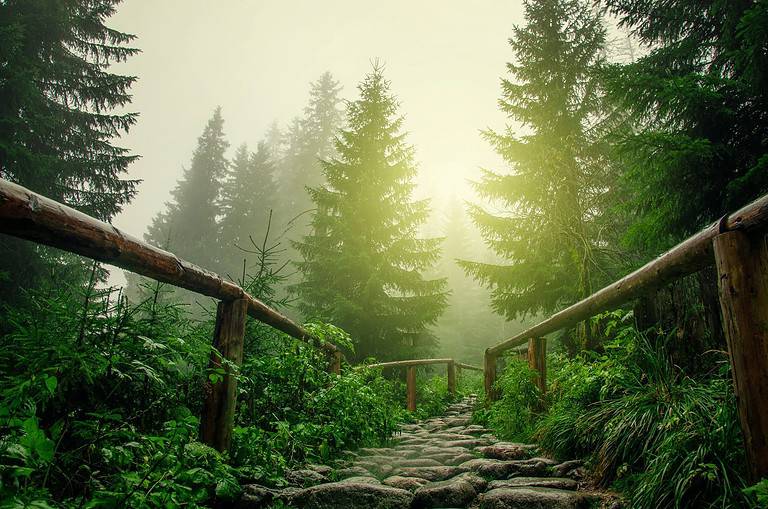37 Exciting Ideas for Hiking and Camping
Millions of people enjoy the great outdoors every year. According to the National Park Service:
- There are around 57.8 million hikers in the US.
- The National Trails System consists of around 193,000 hiking miles.
- The National Trails System includes 200,000 miles of trails located on federal lands.
- The National Trails System has been very beneficial allowing for 9 million backpackers and 8 million mountain bikers on the trails alongside hikers.
1. Plan And Embark On A Multi-day Backpacking Trip:
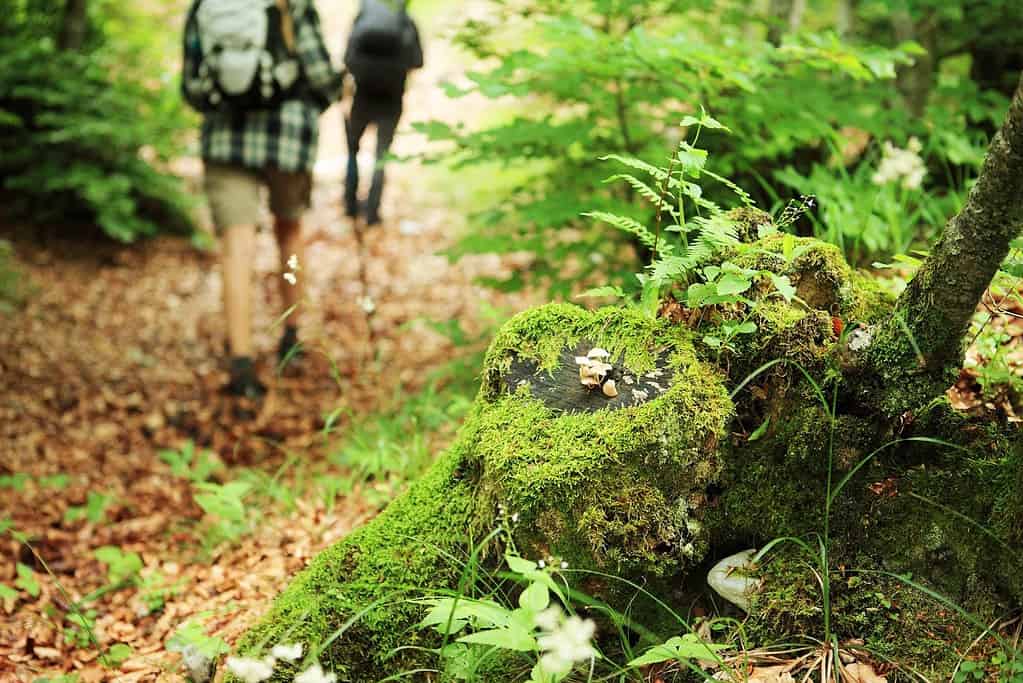
Prepare for an unforgettable adventure by planning a multi-day backpacking trip. Research different trails and destinations, considering difficulty level, terrain, and scenery. Plan your route, including camping spots and water sources along the way.
Make sure you have the necessary gear, such as a backpack, tent, sleeping bag, cooking equipment, and food supplies. Pack lightweight and compact items, considering the duration and weather conditions.
2. Learn How To Identify Different Types of Wildflowers Along the Trail:
Make your hiking experience by learning to identify the various wildflowers you encounter. Get a field guide or use a plant identification app to help you recognize different species.
Take note of the flower’s shape, color, and unique characteristics. Learn about their life cycles, habitat preferences, and any particular uses or folklore associated with them. Take your time to observe and appreciate the beauty of wildflowers as you hike, expanding your knowledge of the natural world around you. This is a great way to experience a hike.
3. Try Your Hand At Geocaching And Discover Hidden Treasure Along The Way:
Geocaching is a modern-day treasure hunt that adds an element of excitement to hikes. Navigate to specific coordinates using a GPS device or smartphone app to find hidden caches. Caches can range from small containers with tiny trinkets to larger containers with logbooks.
As you search for caches, enjoy the thrill of exploration and the satisfaction of finding hidden treasures. Remember to follow geocaching etiquette by leaving items of equal or greater value when taking something from a cache and leaving no trace behind.
4. Set Up A Hammock And Relax In Nature:
Take a moment to relax and appreciate the tranquility of nature by setting up a hammock. Find two sturdy trees, ensuring they are a safe distance apart. Attach your hammock securely, ensuring a comfortable and stable position.
5. Master The Art Of Campfire Cooking:
Enjoy your camping experience by mastering the art of campfire cooking. Learn different cooking methods, such as grilling, foil packet cooking, and Dutch oven cooking. If you can grill well, this may be easier for you.
Experiment with various recipes, from classic campfire favorites like s’mores and foil-wrapped meals to more elaborate dishes with fresh ingredients.
6. Practice Leave No Trace Principles To Minimize Your Environmental Impact:
As responsible hikers and campers, it’s essential to practice Leave No Trace principles. This set of outdoor ethics aims to reduce human impact on the environment. Familiarize yourself with the seven principles.
These include: planning ahead and preparing, traveling and camping on durable surfaces, disposing of waste properly, leaving what you find, minimizing campfire impacts, respecting wildlife, and being considerate of other visitors. This preserves the natural beauty of the outdoors for everyone.
7. Learn Basic Wilderness Survival Skills:
Equip yourself with basic wilderness survival skills to enhance your outdoor experiences. Learn how to construct emergency shelters using natural materials like branches, leaves, and debris.
Familiarize yourself with techniques for finding and purifying water from rivers, lakes, or streams. Additionally, learn how to start a fire using different methods, navigate using a map and compass, and signal for help if needed.
These skills provide confidence and peace of mind, allowing you to venture deeper into the wilderness, knowing you can handle unexpected situations.
8. Go On A Sunrise Hike:
There is nothing like setting your alarm early, lacing up your hiking boots, and embarking on a sunrise hike to experience the breathtaking beauty of nature awakening. Choose a trail with a vantage point that offers a stunning view of the sunrise.
9. Take A Nature Photography Workshop And Capture Stunning Landscapes:

Enhance your photography skills by participating in a nature photography workshop. These workshops are led by experienced photographers who can provide guidance on composition, lighting, and capturing the essence of the natural world.
Learn how to use different camera settings, experiment with different angles, and focus on capturing the details that make each landscape unique. As you develop your skills, capture the beauty of the outdoors and tell visual stories that inspire others to appreciate and protect nature.
10. Explore Night Hiking:
Expand your hiking horizons by venturing out for a night hike. Choose a trail that is well-marked and familiar, ensuring a safe experience. Make sure you have a good flashlight and maps when you set out.
Night hiking is a whole different experience. You’ll see many different animals and also have a chance to star gaze. Remember to stay on the trail and always be aware of what’s around you. Take extra precautions for your safety.
11. Join A Local Hiking or Outdoor Club:
Connect with fellow outdoor enthusiasts by joining a local hiking or outdoor club. These clubs offer opportunities to meet like-minded individuals who share your passion for the outdoors.
Participate in group hikes, workshops, and social events where you can learn from others, share experiences, and forge new friendships. Being part of a community of outdoor enthusiasts enriches your outdoor adventures. It opens doors to new trails, insights, and adventures you may have yet to discover independently.
12. Challenge Yourself With A Strenuous Peak Bagging Adventure:
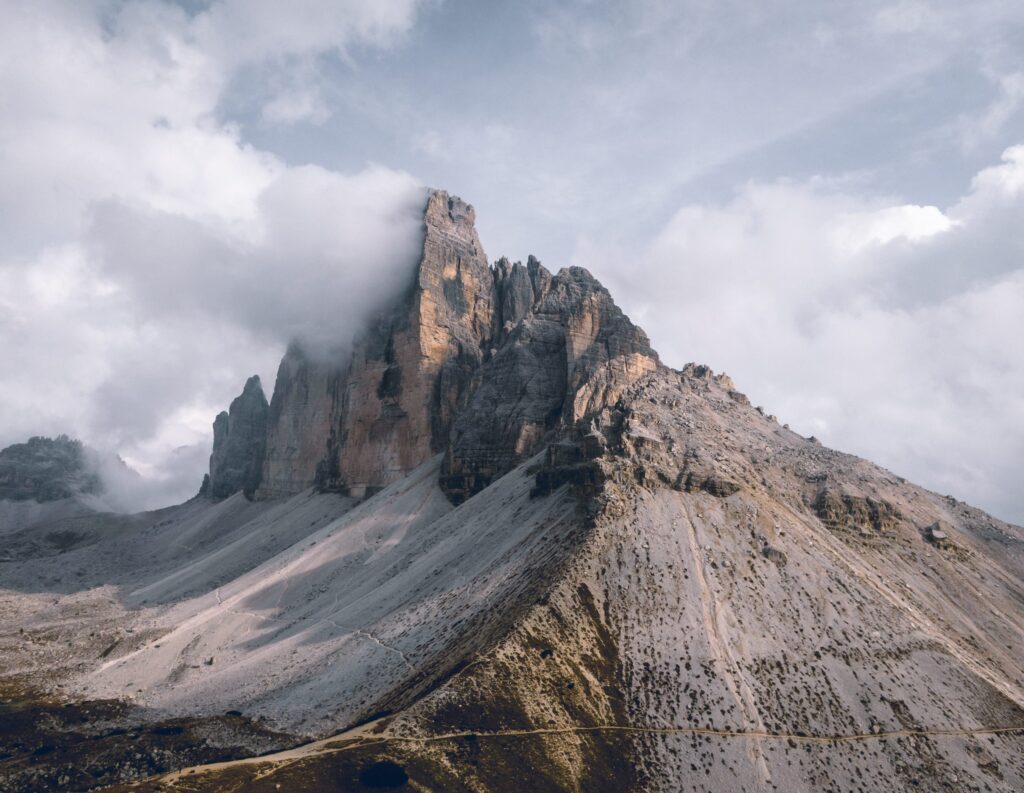
Push your physical and mental limits by embarking on a peak bagging adventure. Peak bagging involves climbing and reaching the summits of multiple peaks within a specific region or mountain range.
Research the peaks you plan to conquer, including their elevation, trail conditions, and any necessary permits. Train and prepare yourself physically for the demanding terrain and altitude.
13. Go On A Trail Running Adventure:

Experience the thrill of trail running as you explore the outdoors at a quicker pace. Choose trails suitable for running, considering the terrain, elevation gain, and technicality. It’s good to start with shorter distances and gradually increase your mileage as your fitness improves.
14. Learn About Local Wildlife And Try To Spot Different Animal Species:
Expand your knowledge of local nature and embark on wildlife-spotting adventures during your hikes. Research the types of animals that inhabit the area you plan to explore. Learn about their behavior, habitats, and tracks they leave behind.
As you hike, keep your eyes peeled for signs of wildlife, such as footprints, scat, or nesting sites. Listen for bird calls and observe the movement of small mammals. Spotting wildlife in its natural habitat adds excitement and connection to the ecosystem around you.
15. Set Up A Bird-Watching Station And Identify Various Bird Species:
Enhance your hiking experience by setting up a bird-watching station along your favorite trails. Carry binoculars and a bird identification guide to help you spot and identify different bird species.
Find a peaceful spot away from disturbances, and observe birds in their natural habitat. Take note of their physical characteristics, behavior, and unique calls. Bird-watching allows you to develop a deeper appreciation for the diverse avian life that inhabits the wilderness and adds a new dimension to your outdoor adventures.
16. Practice Yoga or Meditation:
Embrace the connection between mind, body, and nature by practicing yoga or meditation in a peaceful natural setting. Find a quiet spot surrounded by the beauty of the outdoors, whether it’s a serene meadow, a calm lake, or a secluded forest clearing.
Engage in mindful movements, breathing exercises, and meditation techniques to find inner peace and balance. Let nature’s soothing presence guide your practice and deepen your connection to the present moment.
17. Learn How To Navigate Using A Map And A Compass For Off-Trail Exploration:

Develop your navigational skills. Learn how to use a map and compass. Understanding map symbols, contour lines, and orientation will enable you to navigate off-trail and explore areas beyond marked paths.
Learn to take accurate compass bearings, plot routes, and identify critical landmarks. These skills provide a sense of adventure and open up new possibilities for exploration in uncharted territories. However, always prioritize safety and ensure you have a backup plan when venturing into unfamiliar terrain.
18. Experiment With Different Hiking Gear:
Experiment with various hiking gear and equipment to find the perfect fit for your outdoor adventures. Explore different backpack styles, considering factors like capacity, weight distribution, and comfort features.
Test out different hiking boots or trail shoes to find the right balance of support and flexibility for your feet. Experiment with different types of hiking poles, tents, sleeping bags, and other essentials to discover what works best for you. Finding gear that meets your specific needs and preferences can enhance your comfort and enjoyment on the trails.
19. Organize A Group Hike:
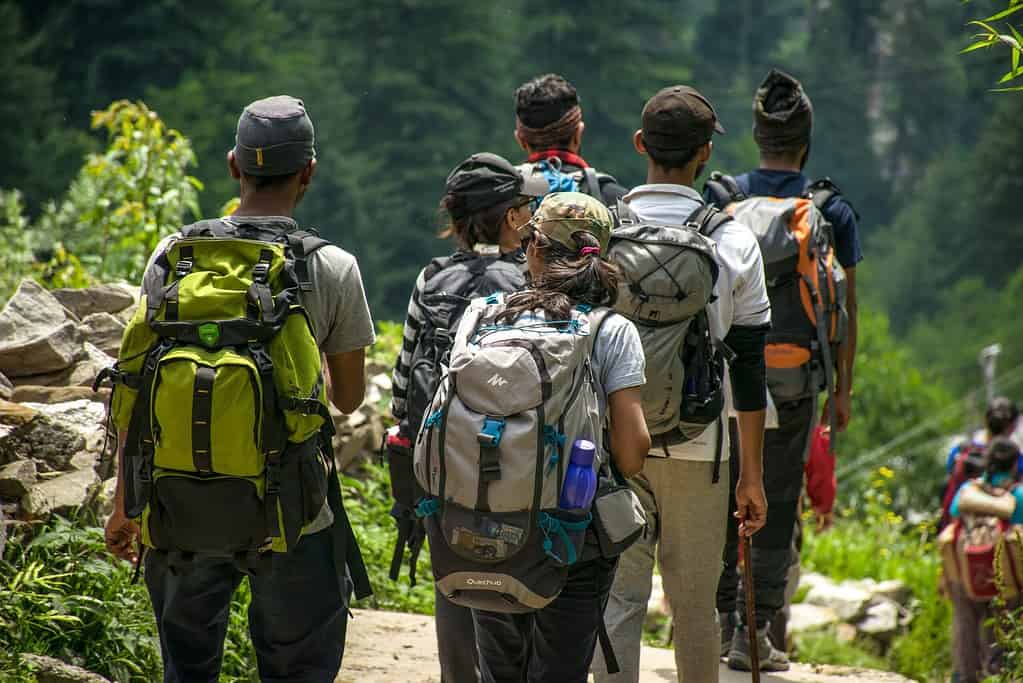
Share the joy of hiking by organizing a group hike and inviting friends or fellow outdoor enthusiasts. Select a trail suitable for different skill levels and preferences. Provide details on the distance, difficulty, and any special considerations.
Consider organizing themed hikes or collaborative activities along the trail, such as a photography contest or a group picnic. Group hikes allow everyone to share their passion for the outdoors, exchange experiences, and create lasting memories.
20. Visit Lesser-Known Or Hidden Gem Trails:
Step off the beaten path and discover lesser-known or hidden gem trails for a unique hiking experience. Research local recommendations, consult guidebooks, or contact local hiking organizations for insider tips.
These trails may offer solitude, unspoiled natural beauty, and unique features that are less well-known than popular destinations. You can see beautiful destinations more intimately, away from crowds and distractions.
21. Volunteer For Trail Maintenance Or Conservation Projects:
Contribute to the preservation and maintenance of hiking trails by volunteering for trail maintenance or conservation projects. Many hiking organizations and environmental groups offer opportunities to participate in trail cleanups, trail restoration, and habitat restoration initiatives.
By volunteering your time and effort, you actively contribute to the sustainability of outdoor spaces for generations to come. It’s a chance to give back to the natural world that has provided countless moments of inspiration and rejuvenation.
22. Take A Guided Nature Walk And Learn From Knowledgeable Local Guides:
Enhance your hiking experience by joining a guided nature walk led by knowledgeable local guides. These experts possess in-depth knowledge about the flora, fauna, geology, and cultural history of the area you’re exploring.
They can provide interesting insights, answer questions, and help you discover hidden wonders that you might have otherwise overlooked. Guided nature walks offer a unique educational experience, allowing you to deepen your understanding of the natural world while enjoying the beauty of the trail.
23. Challenge Yourself With A Thru-Hike On A Long Distance Trail:
Push your limits and embark on a thru-hike, completing a long-distance trail from start to finish. Research iconic long-distance trails, such as the Appalachian Trail, Pacific Crest Trail, or Camino de Santiago, and choose one that aligns with your fitness level and time availability. Thru-hiking requires careful planning, physical endurance, and mental resilience.
Be prepared to carry all necessary supplies and face various terrain and weather conditions. By immersing yourself in the thru-hiking experience, you’ll develop a deep connection with the trail, encounter fellow hikers with inspiring stories, and undergo a transformative journey of self-discovery.
24. Learn About Local Flora And Fauna:
Deepen your knowledge of the natural world by learning about local flora and fauna and their traditional uses. Explore indigenous cultures’ rich history and deep connection with the land.
Discover which plants were used for food, medicine, shelter, or ceremonial purposes. Seek out books, online resources, or local guides to learn more about the traditional uses of plants and animals in your hiking region.
25. Attend Outdoor Skills Workshops To Improve Your Knowledge:
Enhance your outdoor knowledge and skills by attending workshops or classes focused on outdoor skills. Look for workshops offered by local outdoor education centers, wilderness schools, or outdoor retailers.
You can learn about various topics in these workshops, such as wilderness survival, map reading, knot tying, outdoor cooking, wildlife tracking, or nature photography.
By investing time in learning new skills, you’ll become more self-reliant, confident, and capable of handling different outdoor scenarios.
26. Go On A Waterfall-Hopping Adventure:
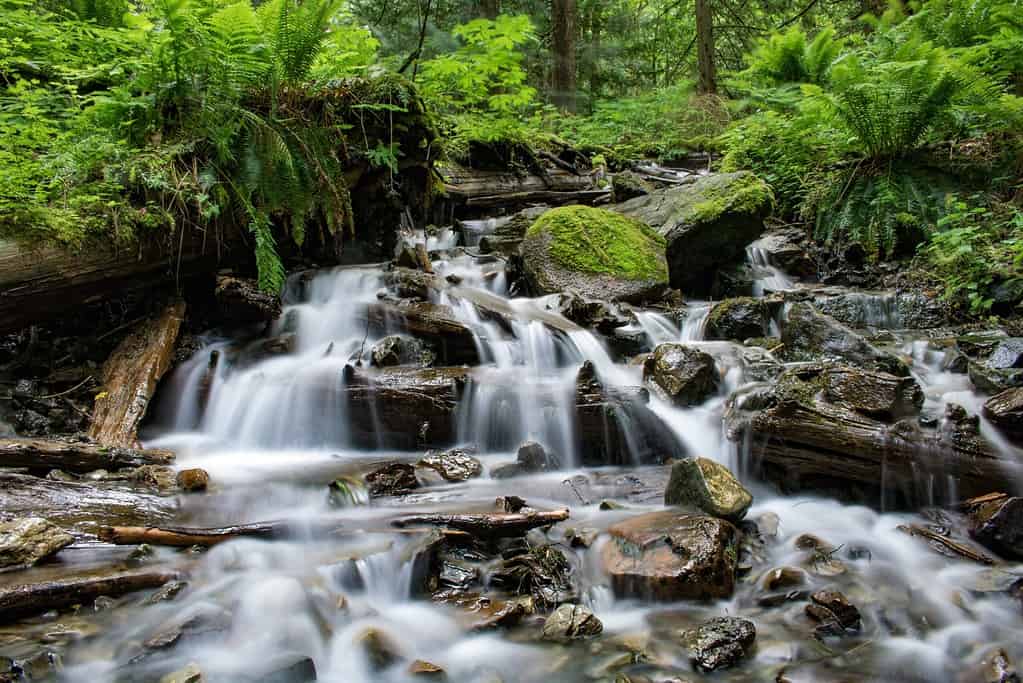
Plan a hiking trip to find and explore stunning waterfalls. Research local waterfall hikes, considering factors like accessibility, distance, and the beauty of the falls. Pack a swimsuit if swimming is allowed.
27. Learn About The History Of The Areas You Hike:
Deepen your understanding of the places you hike by learning about their history and cultural significance. Research the indigenous peoples who originally inhabited the area and the stories that shaped the land.
Discover the historical events that unfolded in the region and the role nature played in shaping the lives of the people who lived there. Visit historical landmarks, read local literature, or consult local guides to gain a broader perspective on the land you tread.
By looking at the history and cultural heritage of the places you hike, you’ll develop a stronger sense of connection to the land and a deeper appreciation for its significance.
28 Go Fishing In Nearby Lakes or Rivers:
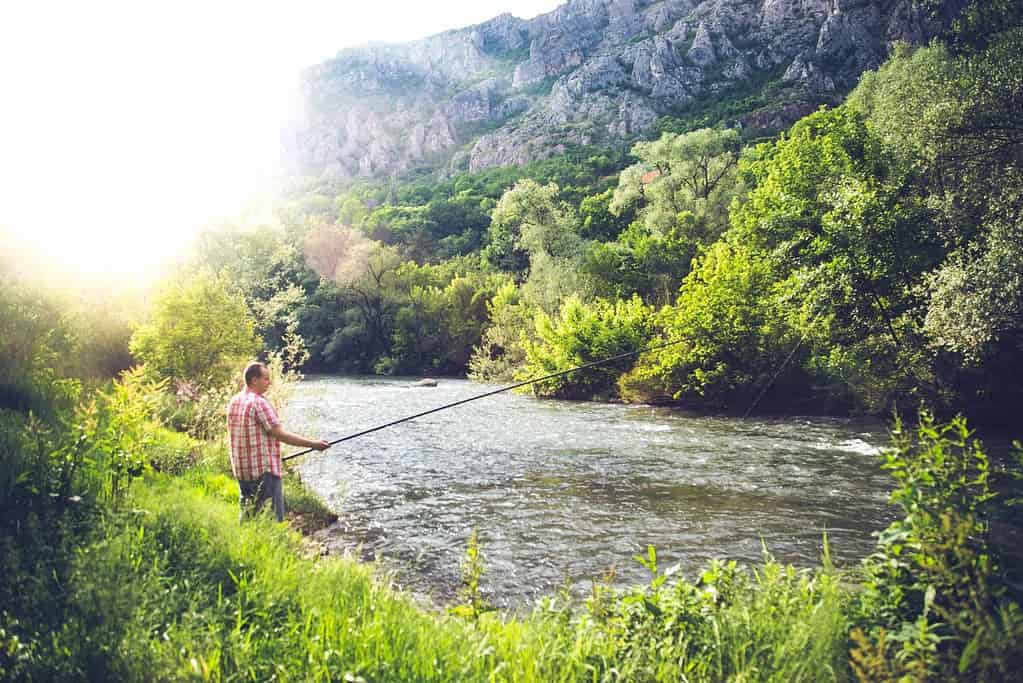
Add a new dimension to your outdoor experiences by trying your hand at fishing during your hikes or camping trips. Take along a pole!
Research local regulations, obtain the necessary permits or licenses, and learn about the fish species that inhabit the lakes or rivers in the area. Pack lightweight fishing gear, such as a collapsible fishing rod, fishing line, hooks, and bait.
29. Learn Basic First Aid And Wilderness Medicine Skills for Trail Safety:
Prioritize safety on your outdoor adventures by learning basic first aid and wilderness medicine skills. Take a certified wilderness first aid course or attend workshops that cover topics like wound care, splinting, and responding to common outdoor emergencies.
Carry a well-stocked first aid kit and know how to use its contents effectively. Equipping yourself with these essential skills will prepare you to handle potential medical situations while enjoying the great outdoors.
30. Challenge Yourself With A Winter Hiking Or Snowshoeing Expedition:
Step out into the beauty and tranquility of winter landscapes by challenging yourself with a winter hiking or snowshoeing expedition. Research winter-friendly trails, considering accessibility, trail conditions, and safety.
Prepare for cold temperatures by layering appropriate clothing, wearing insulated boots, and using traction devices or snowshoes for added stability on icy surfaces. Explore snow-covered forests, frozen lakes, and majestic snowy peaks. Winter hiking offers a unique experience, allowing you to witness nature’s transformation and experience the peacefulness of the outdoors in its frozen splendor.
31. Explore Different Types of Terrains:
Expand your hiking horizons by exploring different kinds of terrain, each offering unique challenges and rewards.
Venture into dense forests, where towering trees create a serene and mystical atmosphere. Explore desert landscapes, with their stark beauty and resilient plant life. Conquer rugged mountain trails, where breathtaking views await at every turn.
By diversifying your hiking experiences, you’ll develop a versatile skill set, deepen your appreciation for the world’s diverse landscapes, and continually find new inspiration in the ever-changing tapestry of nature.
32. Plan A Hiking Trip To A Different Country Or Continent:
Broaden your hiking experiences by planning a trip to a different country or continent. Research destinations are known for their stunning landscapes and rich hiking opportunities. Immerse yourself in new cultures, explore unfamiliar terrain, and encounter diverse flora and fauna.
Whether it’s hiking through the lush rainforests of Costa Rica, summiting the majestic peaks of the Himalayas, or traversing the rugged fjords of Norway, venturing beyond your familiar trails offers a unique sense of adventure, cultural exchange, and personal growth.
33. Learn About The Area’s Geology And Identify Rock Formations:
Develop a deeper appreciation for the Earth’s geological wonders by learning about the geology of the places you hike. Study the formation of different rock types, understand how landscapes evolve, and identify unique rock formations along your hikes.
Look for signs of ancient geological processes, such as sedimentary layers, volcanic formations, or glacial remnants. Geology adds a new dimension to your outdoor adventures, allowing you to read the story of the Earth as you traverse its diverse terrain.
Many trails across the US are known for their famous rock formations. They are stunning.
34. Challenge Yourself With A Night Navigation Hike Using Only A Headlamp and Map:
Test your navigation skills and experience of hiking in the dark by embarking on a night navigation hike using only a headlamp and map.
Choose a familiar trail or an area with good visibility and minimal hazards. Familiarize yourself with the map and study key landmarks or features. Set off before sunset and rely on your navigational abilities to guide you through the darkness.
Be extra cautious, move slower, and pay attention to your surroundings. Night navigation hikes offer a unique perspective, heighten your senses, and develop your ability to navigate confidently in challenging conditions.
35. Join a Hiking Challenge Or Complete A Series Of Peaks In A Specific Region:
Push yourself to new heights by joining a hiking challenge or embarking on a series of peak bagging adventures in a particular area. Look for organized hiking challenges or create your own personal goals.
This could involve completing a certain number of hikes within a given timeframe, conquering a specific number of peaks, or completing a long-distance trail in sections.
Setting these challenges provides a sense of purpose, motivates you to explore new trails, and offers a tangible way to measure your progress and accomplishments as an outdoor enthusiast.
36. Participate In A Trail Cleanup Event:
Give back to the hiking community and contribute to preserving the natural environment by participating in trail cleanup events. Join local organizations or environmental groups that organize regular trail cleanups.
These events involve removing litter, clearing debris, and maintaining trail markers. By dedicating your time and effort, you actively contribute to the sustainability and beauty of hiking trails, ensuring that future hikers can enjoy clean and well-maintained paths. Trail cleanup events foster community and environmental stewardship among outdoor enthusiasts.
37. Explore Historical Landmarks And Ruins Along The Hiking Trails:
Learn about history by exploring historical landmarks and ruins that dot the hiking trails. Research the historical significance of the area you’re hiking in, whether it’s ancient ruins, pioneer settlements, or remnants of past civilizations.
Observe the architectural details, envision the lives of those who came before, and reflect on the passage of time. Historical landmarks and ruins add a layer of cultural richness to your outdoor experiences, allowing you to connect with the stories of the past and gain a deeper appreciation for the land’s heritage.

